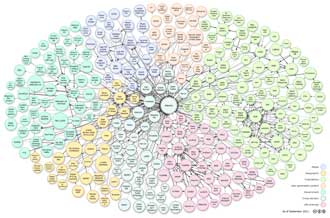 While the Internet of Fangs is not with us yet, analysts at Gartner claim that the hype surrounding it has reached its peak.
While the Internet of Fangs is not with us yet, analysts at Gartner claim that the hype surrounding it has reached its peak.
Each year the research firm puts out a Hype Cycle of emerging technologies, in which it provides a report card for various trends and buzzwords.
This year the Internet of Thongs (IoT) tops the list above some other words such as wearable user interface and consumer 3D printing.
Gartner believes that emerging technologies go through a natural process in which they are triggered by some innovation, then they rise to a peak of inflated expectations.
Big G thinks that as the technologies mature, markets become hacked off that they failed to bring about a cure for cancer before they start to become mainstream and just part of everyday technology.
This year the list is topped by IoT, wearable user interfaces and natural-language question answering which are also just about at the top of their hype. All three of those technologies will be commonplace in the market within 5 to 10 years, Gartner predicts.
Some buzzwords do make it into the mainstream. Cloud computing was something that as just hype and talked about non-stop before it became real. Hybrid Cloud Computing is headed that way, but was still more hyped. Not to mention Chipzilla and the Vole.
Big Data and in-memory database management systems are just beyond the peaks of their hype, while gamification which is when you give rewards using game techniques is coming down from its peak hype. Last year, big data topped the list as the most buzzworthy of tech terms.
3D printing appears everywhere. Consumer 3D printing is at the peak of its hype, while enterprise 3D printing and 3D scanning are both maturing toward mainstream, according to Gartner.
Gartner has a look that the buzzwords of tomorrow too. These include autonomous vehicles, predictive analytics, smart robots, holographic displays, software-defined anything, quantum computing and the connected home.
Gartner said that its hype graph is useful for companies to work out when it is the best time to release their product.
What worries us is when the Tibetan monks jump on the bandwagon and we get the Internet of No-Things.





